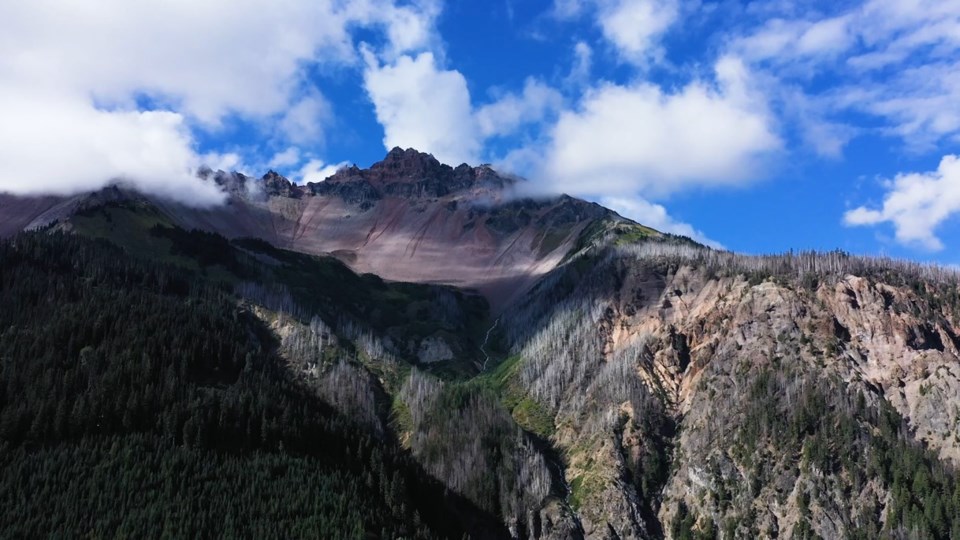The Meager Creek Development Corporation’s (MCDC) managing director Craig Dunn was on hand at the Village of Pemberton’s (VOP) Committee of the Whole (COW) meeting on Dec. 7 to present and discuss the company’s plan to build a geothermal power plant at Mt. Meager with VOP mayor and council.
The plan to build a plant to utilize the potential geothermal energy of the Mt. Meager volcano—one of Canada’s most promising geothermal areas—is not a new one. Companies have been looking at the geothermal potential of that area for years with research being done as far back as the 1980s.
But if all goes according to plan, MCDC will be the first to make meaningful progress toward a renewable geothermal energy source near Pemberton, something no one else has been able to do due to an array of different issues that may no longer be a factor, according to Dunn.
“The fundamental issue of Meager hasn’t necessarily been that there wasn’t enough heat or enough permeability or enough opportunity for a geothermal power project,” he said. “The real fundamental issue was that it was kind of a lost asset because it was so challenging to sell power into the B.C. market at this scale.”
But in spring of 2020, due to the decreased demand for electricity that coincided with the COVID-19 pandemic, BC Hydro cancelled the Independent Power Producers program that bought energy from private companies like Innergex Renewables Inc., which operates 17 hydroelectric power stations in the province, but left room open for baseload renewables, like geothermal energy.
However, since then, there hasn’t been much progress on the IPP program for those baseload renewables. Despite the ongoing complications that come with selling power to the province, MCDC decided to go ahead with the project. But instead of selling the energy it produces, it will instead be using that energy to create and then sell hydrogen through the use of an electrolyser that separates water into hydrogen and liquid oxygen.
“The geothermal resource at Meager Creek is probably going to be one of the cheapest power sources in North America. If you are making power at a very good rate, what other products can you make from it that provides value to the market?” said Dunn.
“We can actually make a product out of the electricity that has a much better return on investment. When you break hydrogen and oxygen apart as water it takes an exorbitant amount of energy, but you’re left with clean hydrogen and basically liquid oxygen is the other option. So if you have cost effective electricity, you have cost effective hydrogen.”
Another benefit of the plant, according to an MCDC release, the power plant’s hydrogen production would offset diesel and natural gas by an estimated 99,000 tonnes of CO2 per year. The carbon credit revenue of offsetting that amount of greenhouse gases could reach over $16.5 million per year by 2030.
The prospect of bringing this geothermal power plant to the Pemberton area proved to be an exciting one for mayor and council although they did have some questions about what exactly the plant would mean for the community and the area surrounding it.
Specifically, Mayor Mike Richman asked about the direct benefits that the community would see from the building and operating of the plant to which Dunn replied that in the short term, there would be a large number of people coming through the village and spending time and money at the local businesses. In the long term, according to Dunn, the expectation is for the plant to be able to assist with the hydrogen market, provide marketing opportunities as well as potentially some heating opportunities for the community, said Dunn, adding that MCDC wants to hear from Pemberton about, “what would the town like to see or what would the town not like to see along those lines and the ability for some of that resource to stay in the valley.”
With the Village’s water use being a constant topic of conversation, especially after a summer that saw record-breaking water use during June’s heat dome, councillor Amica Antonelli asked about how much water the plant and the electrolyser would end up using.
“The comments about geothermal is that it uses a massive amount of water and that’s actually true,” Dunn responded, explaining that in this process the water is re-injected back into the system so, “the only water that is used … is in some of the air cooling. And ideally, we would have an air-cooled system, so little to no water used at all.”
Dunn’s expectation is for the plant to be built by the end of 2024 and to be operating by 2025.


